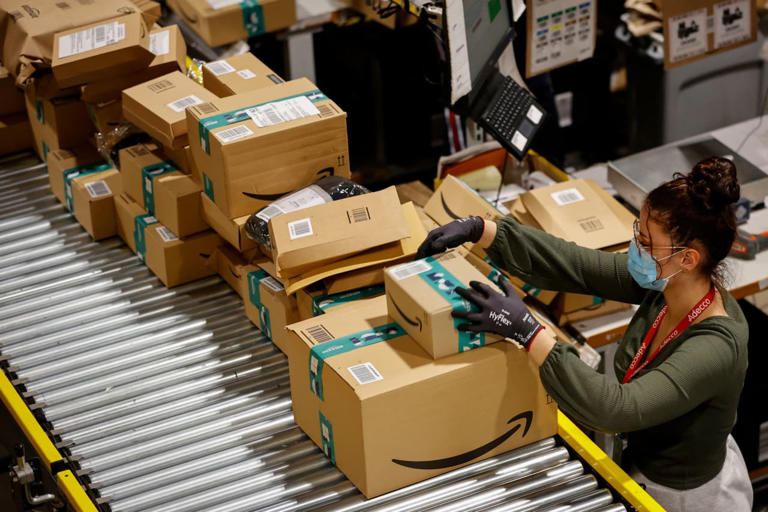The recent unionization of Amazon workers at the JFK8 warehouse in Staten Island, New York, under the International Brotherhood of Teamsters marks a pivotal moment in the ongoing saga of labor relations within one of the world’s largest e-commerce and logistics companies. This development, where the Amazon Labor Union (ALU) voted overwhelmingly to affiliate with the Teamsters, underscores significant shifts in how Amazon’s workforce perceives and seeks to address workplace issues.
The ALU’s genesis dates back to 2022 when it became the first union at Amazon’s U.S. operations following a successful vote among Staten Island warehouse workers. Despite this initial breakthrough, expanding union presence to other Amazon sites across the country and negotiating comprehensive contracts has proven challenging. The focus, thus far, has primarily centered on securing better working conditions and contractual agreements specifically tailored to the JFK8 facility.
Chris Smalls, the prominent figure behind the ALU and its president, has articulated the union’s mission to leverage the considerable support from the Teamsters, a powerhouse union with extensive experience in representing workers across various industries. With approximately 1.3 million members backing their efforts, the ALU now wields substantial collective bargaining power aimed at advocating for improved wages, benefits, job security, and overall workplace fairness for Amazon warehouse employees in Staten Island and beyond.
Amazon’s stance on unionization has been consistently cautious and somewhat resistant. The company has historically preferred direct relationships with its workforce, arguing that this approach fosters agility and innovation within its operations. Concerns about potential disruptions to business continuity and flexibility have underpinned Amazon’s opposition to widespread unionization, a sentiment echoed in previous labor disputes and legal challenges.
Despite these reservations, the Teamsters’ affiliation with the ALU signifies a strategic move towards addressing long-standing grievances among Amazon’s warehouse workers. The union’s jurisdiction extends not only to JFK8 but also covers Amazon employees in New York City’s boroughs, presenting a unified front in advocating for workers’ rights across multiple sites.
While the JFK8 unionization represents a localized victory, recent unionization efforts among Amazon delivery drivers and at critical logistical hubs like the Cincinnati Northern Kentucky International Airport underscore broader nationwide efforts to enhance labor rights within Amazon’s expansive network. These initiatives highlight ongoing tensions between Amazon’s operational model and the growing demands for fair treatment, safety measures, and equitable compensation from its diverse workforce.
Internationally, the UK’s GMB union’s ballot for union recognition among Amazon workers further reflects a global trend towards union activism within the company. If successful, this could mark a significant milestone as Amazon would be compelled to formally recognize and negotiate with a trade union in the UK for the first time.
In conclusion, while the unionization at JFK8 in Staten Island represents a localized effort with specific goals, its alignment with the Teamsters and parallel developments domestically and internationally signal broader implications for Amazon’s labor relations strategy. The evolving landscape of unionization efforts within Amazon underscores the dynamic interplay between corporate interests, worker advocacy, and the ongoing pursuit of fair and equitable workplace conditions in the digital age.
